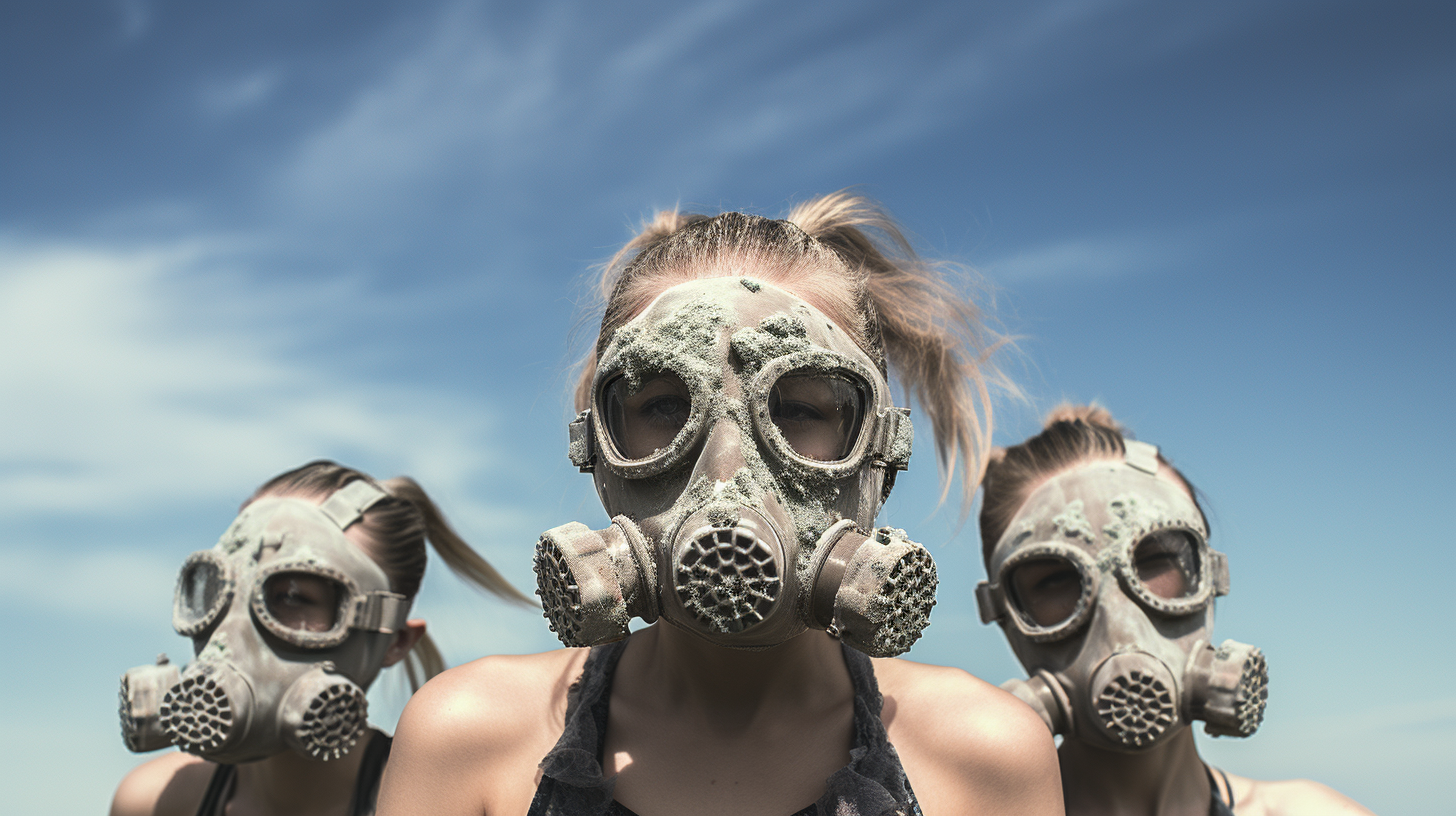In the shadow of our towering, gray wastelands — once proud metropolises — we have become a society of masked breathers. The specter of choking, toxic air has necessitated a grim accessory: the filtration mask — a barrier between us and the biosphere, once our home, now a poisonous fog.
Our generations, forewarned by voices long ignored, inherit a world engulfed in fumes. The ubiquitous masks adorn every face, the last defense in a world where the air we breathe is a corrosive tide, eroding the health of every living soul that dares venture unshielded.
The inexorable rise in respiratory illnesses is not an enigma. Children born with lungs that grasp for clean air and elders with chests rattling the symphony of the times bear testament to the pervasive spread of our self-inflicted atmosphere. The oxygen we share—life’s invisible thread—has become a noxious cocktail; every breath drawn is a risk, each exhalation a silent prayer.
A walk through the streets reveals a stark tapestry: faces veiled with filters, eyes darting in suspicion, and the muffled sounds of humanity’s new voice. The markets, once vibrant with banter and color, now subdued under the weight of silent exchanges, as if sound was also a casualty of the tainted breeze.
Amid the chaos of our making, a cottage industry flourishes. In a cruel twist of capitalism, entrepreneurs have sculpted a niche — designer masks, tailored not just to protect but to project identity, futile flair on the ramparts of the ruins. These masks, ranging from the sleek and fashionable to the sturdy industrial, have become cultural icons, a statement of survival, and a morbid reminder of the world we’ve engineered.
But it’s not just the air that is tainted. The psychological toll is palpable. Human connection, once fostered by an exchange of smiles or the intimacy of shared spaces, finds itself stifled. In a society where facial expressions are concealed and distance is maintained, trust falters and mental health fractures under a perpetual siege.
The environmental refugees, ousted from homes that gasp for revitalization, migrate in droves to enclaves promising cleaner skies. Yet, these sanctuaries dwindle, choked by the relentless advance of the gray. Desolation spreads, feeding on the carcasses of ecosystems that once thrived with diversity.
Through the gloom, scientific advancements offer a glimpse — not of hope, but of adaptation. Breakthroughs in filtration technology allow for better barriers, though the very need for such inventions is the epitaph of our world’s epitaph. A permanent solution remains afar, a mirage on the horizon of our scorched Earth.
As journalists, chroniclers of this descent, we watch, we write, and we garb ourselves in the same synthetic skins that shield our readers. The irony is not lost on us — protectors of stories now enveloped in layers to protect from our own story.
And so we march on, a civilization in masks — not out of choice, but out of necessity. In a world unwilling to forego the engines of its demise, we adapt, we conceal, and we continue to gasp in the toxic embrace of our making.
